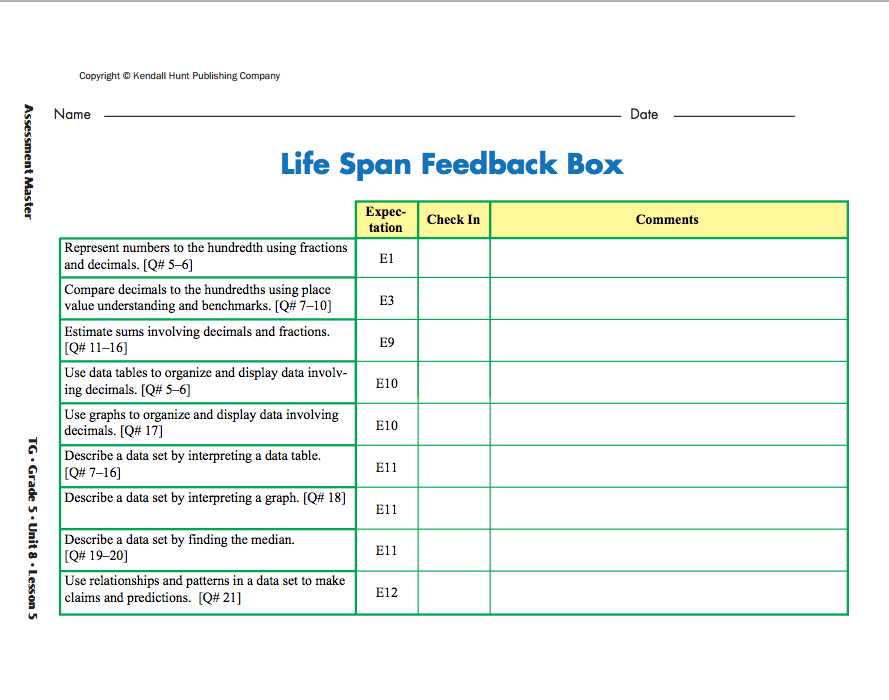Life Spans
Est. Class Sessions: 1–2Summarizing the Lesson
Use Questions 21–22 to summarize the lesson. Display the statements students have written about the two data sets from earlier in the lesson. Then organize students into small groups and ask them to discuss Questions 21–22. Ask each group to prepare a display to share their responses to the questions, “How did the life spans change” and “What do you think caused the changes?”
After each group is prepared, ask one of the groups to start the whole-class discussion by sharing their comparisons and explanation.
Then ask:
Comparing these two data sets, students can say that many more people in the 1858 data set died as children and very few lived long lives. In general, the people in the 2014 data set lived longer lives.
As students discuss Question 22, they should think about possible reasons for the change in the life spans. Students should understand that in the 1800s, many children died. Of those who survived childhood, many died early in life because of poor living conditions and disease. In the 1900s, living conditions began to improve in the United States. Changes that have had significant impact on human life spans include increased use of window screens, accessibility to pure drinking water, treatment of raw sewage, access to medical care, and the development of antibiotics to treat infections.













